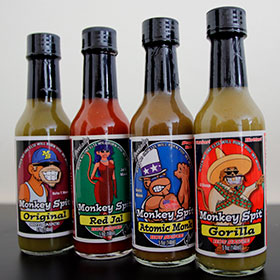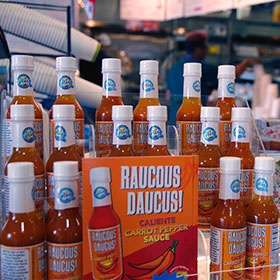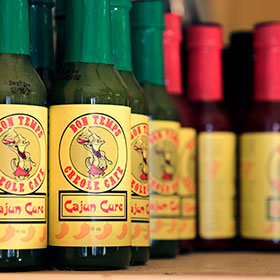Over the past few years the global interest in tongue melting spice has been on the rise. In 2017 the hot sauce market was rapidly expanding, with projected annual revenues of over a billion dollars. In 2019, the global demand for fiery sauces has continued to skyrocket, and the variety of sauces available has become almost overwhelming. As the trend grows globally, new sauces appear on the market with inspirations from all over the globe, inciting cultural fusions never before seen in modern cuisine. These sauces vary wildly in flavor and heat, and are giving the world a glimpse into the characteristics of cultural cuisines from around the world. With the hot sauce trend showing no signs of letting up, it is important for Chiliheads to keep up with their local hot sauce industry.
Here, heat seekers can discover what atomic condiments the central coast has to offer.


















![Sheila Zarate, a server at Bon Temps, said that they “go through the red [sauce] a lot.”
The recipe for both in house sauces has been the same since Sheila started 11 years
ago. Bon Temps Creole Cafe in San Luis Obispo 10/21/19](img/17.jpg)

 />
/>
 />
/>
 />
/>